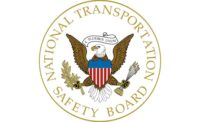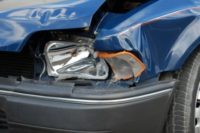A NTSB Safety Compass blog post
Most Wanted List Progress Report: Highway Safety
We’re now midway through the 2017–2018 Most Wanted List cycle, and we’re eager to learn how this year will measure up to previous years. The past 2 years have resulted in an increase in highway traffic fatalities—from 32,000 roadway deaths per year in 2014 to more than 37,000 in 2016—so clearly, improvements are vital. We checked in with stakeholders on the progress they’re making to address the most pressing issues, and they’ve updated us on their successes and struggles. Here’s where we stand.
We’re now midway through the 2017–2018 Most Wanted List cycle, and we’re eager to learn how this year will measure up to previous years. The past 2 years have resulted in an increase in highway traffic fatalities—from 32,000 roadway deaths per year in 2014 to more than 37,000 in 2016—so clearly, improvements are vital. We checked in with stakeholders on the progress they’re making to address the most pressing issues, and they’ve updated us on their successes and struggles. Here’s where we stand.
Install Collision Avoidance Technologies
Collision avoidance technologies can reduce the number of deaths and injuries on the nation’s roadways now. Today, automatic emergency braking (AEB) and forward collision warning systems already work to reduce rear-end crashes in equipped vehicles, and we’ve been working to encourage industry and vehicle manufacturers to adopt such systems. In 2017, we co-hosted a roundtable with the National Safety Council on commercial vehicle (heavy-duty truck) use of advanced collision avoidance technologies and learned that truck manufacturers are beginning to see high customer demand for forward collision avoidance systems on their trucks. During the roundtable, one manufacturer indicated they were making the technologies standard on their trucks, while another mentioned that over 60 percent of their customers purchase vehicles with technology. In addition, the National Highway Traffic Safety Administration (NHTSA) is making progress on evaluation and testing collision avoidance technologies. We continue to advocate for connected vehicle technology because these technologies can further aid in collision avoidance, especially in situations where vehicle resident sensors are weak. Safety should never be considered a barrier to innovation, but rather, an integral component of it.
End Impairment in Transportation
In 2017, we saw progress on reducing alcohol impairment in transportation. Utah became the first state in the nation to pass a law setting a .05 percent blood alcohol content per se limit, and Nebraska and Oklahoma passed all-offender ignition interlock laws. The Federal Motor Carrier Safety Administration (FMCSA) published a final rule establishing the Commercial Driver’s License Drug and Alcohol Clearinghouse, and NHTSA developed training programs addressing the full range of responses to alcohol impairment, from enforcement through adjudication. Yet, we still need more states to strengthen their impaired driving laws and enforcement. We also need improved “place of last drink” (POLD) data to help law enforcement officers deter future violations, and we need better methods to measure impairment by drugs other than alcohol.
Require Medical Fitness, Reduce Fatigue-Related Accidents
In terms of medical fitness, we’ve criticized both the FMCSA and the Federal Railroad Administration because they have withdrawn their advance notice of proposed rulemaking regarding obstructive sleep apnea, which could have led to a rulemaking to address this important issue for people in safety-critical positions. In the highway mode, untreated moderate‑to-severe sleep apnea disqualifies drivers from operating large commercial vehicles because it affects driving safety, yet clear guidance is needed to assist medical examiners in identifying the condition. Nevertheless, the FMCSA has made notable progress by developing a National Registry of Certified Medical Examiners that lists all medical professionals who are qualified to certify drivers. This is a step in the right direction.
The FMCSA took another important step to improve safety when it implemented the electronic logging device (ELD) rule in December 2017. The rule requires the use of technology to automatically track driving and duty time. The NTSB advocated for such devices for many years because they enable better enforcement of hours-of-service regulations and can lead to reductions in drowsy driving among truck and bus drivers.
Eliminate Distractions
Our roundtable earlier this year, “Act to End Deadly Distractions,” brought together survivor advocates and experts throughout industry and government to discuss progress on state laws. We are beginning to see states consider legislation that would completely ban the use of hand-held devices, which highlight manual and visual distraction, but public awareness of the cognitive distraction that can result from hands-free device use remains very low.
Strengthen Occupant Protection
The good news this year on occupant protection is that motorcoaches are now built with lap and shoulder belts for all passenger seating positions. Now we’re focusing on all motorcoach passengers properly using those belts and using them every timethey ride. We are urging primary enforcement of seat belt laws for all vehicles, including large buses equipped with belts, at every seating position, and we’re calling for safety briefings on motorcoaches similar to those delivered on commercial flights that explain seat belts and other safety features. As for passenger vehicles, some states, such as Massachusetts and New Hampshire, are considering joining the 34 states that already have primary enforcement of mandatory seat belt laws. Primary enforcement of mandatory seat belt laws is proven to increase seat belt use and, thereby, reduce the number of deaths and injuries on the roads. Regarding motorcycles, we are concerned that some states are repealing their helmet laws, because we know reduced helmet use will lead to more traumatic brain injuries and deaths.
Critical topics that touch on these highway safety issues are speeding and roadway infrastructure. Our recent safety study on speeding establishes what many of us already know but may not always apply: speeding increases the risk and severity of a crash. Here again, along with other safety recommendations, we’ve identified available technologies that can save lives but are not currently in use. The importance of infrastructure was highlighted recently by our highway accident report on a motorcoach collision that killed 2 people and injured 14 others. An unrepaired crash attenuator, an unmarked gore area, and out-of-compliance signage were cited in the report, in addition to the lack of seat belt use by most of the occupants.
Expand Recorder Use
Finally, we continue to urge all large highway vehicles be required to be equipped with recorders that capture a standard set of parameters. Event data recorders are vital investigative tools in every transportation mode—they help us do our job better and faster by providing valuable information after a crash so we can figure out what went wrong and make recommendations that prevent future injuries and deaths. Unfortunately, in crashes involving large trucks or buses, we are often left with limited data from the vehicle about the crash. We learn much more from passenger vehicles in crashes than from trucks and buses because of the standards NHTSA has developed (no such standards exist for trucks or buses). These standards are critical for large-vehicle operators, who can use recorders to train their drivers and increase safety.
The Most Wanted List midpoint mark allows us to reflect as well as plan and set new goals for the upcoming year. Although we have a long way to go to reach zero fatalities on our roadways, the efforts highlighted above, innovative partnerships and strategies, and bold actions to advance our recommendations are what we need to make America’s roadways fatality-free.
Looking for a reprint of this article?
From high-res PDFs to custom plaques, order your copy today!





